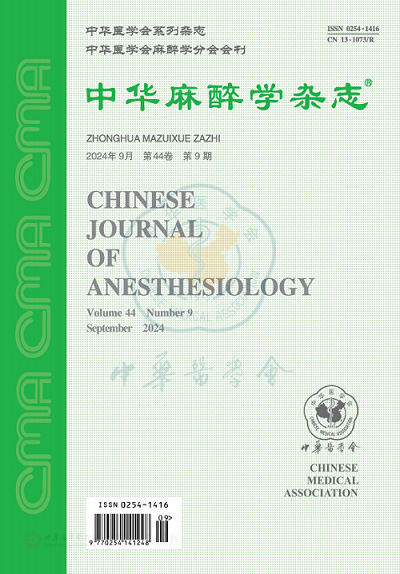Assessment of brain edema occurrence during laparoscopic radical resection of gynecological tumor: measurement of optic nerve sheath diameter by ultrasound method
Q4 Medicine
引用次数: 0
Abstract
Objective To assess whether brain edema occurred during laparoscopic radical resection of gynecological tumor through measurement of optic nerve sheath diameter (ONSD) by ultrasound. Methods Forty American Society of Anesthesiologists physical status Ⅰ or Ⅱ patients, aged 35-64 yr, with body mass index of 18.5-25.0 kg/m2, scheduled for elective laparoscopic radical resection of gynecologic tumor, were divided into 2 groups (n=20 each) using a random number table method: hypertonic sodium chloride hydroxyethyl starch 40 injection (HSH40) therapeutic diagnosis group (group H) and normal saline control group (group N). HSH40 5ml/kg was continuously infused for 30 min starting from 150 min after Trendelenburg position and CO2 pneumoperitoneum in group H, and the equal volume of normal saline was given instead in group N. The bilateral ONSDs were measured using ultrasound at 5 min after anesthesia induction (T0), 10, 60, 120 and 180 min after Trendelenburg position and CO2 pneumoperitoneum (T1-4) and 10 min of supine position after deflation (T5). The occurrence of increased intracranial pressure before and after therapeutic diagnostic test and efficacy of therapeutic diagnostic test were observed. Results The ONSD was significantly shorter at T4-5 in group H than in group N (P 0.05). The effective rate of therapeutic diagnostic test was 94% in group H (P<0.05). Conclusion Laparoscopic radical resection of gynecologic tumor factor can induce brain edema, and preventive measures should be taken. Key words: Brain Edema; Pneumoperitoneum, artificial; Gynecologic surgical procedures; Optic nerve; Neurilemma腹腔镜妇科肿瘤根治术中脑水肿发生的评价:超声法测量视神经鞘直径
目的通过超声测量视神经鞘直径(ONSD),评价腹腔镜妇科肿瘤根治术中是否发生脑水肿。方法采用随机数字表法将40例年龄35 ~ 64岁、体质指数为18.5 ~ 25.0 kg/m2、符合美国麻醉学会体质状况Ⅰ或Ⅱ的择期腹腔镜妇科肿瘤根治术患者分为两组,每组20例。高渗氯化钠羟乙基淀粉40注射液(HSH40)治疗诊断组(H组)和生理盐水对照组(N组),H组从Trendelenburg体位后150 min开始,CO2气腹后连续输注HSH40 5ml/kg,连续输注30 min, N组以等量生理盐水代替。麻醉诱导后5 min (T0)、10、60、Trendelenburg体位和CO2气腹后120和180 min (T1-4),放气后仰卧位10 min (T5)。观察治疗性诊断试验前后颅内压增高的发生情况及治疗性诊断试验的疗效。结果H组t4 ~ 5时的ONSD明显短于N组(P < 0.05)。H组治疗性诊断试验有效率为94% (P<0.05)。结论腹腔镜妇科肿瘤因子根治术可诱发脑水肿,应采取预防措施。关键词:脑水肿;人工气腹;妇科外科手术;视觉神经;神经鞘
本文章由计算机程序翻译,如有差异,请以英文原文为准。
求助全文
约1分钟内获得全文
求助全文

 求助内容:
求助内容: 应助结果提醒方式:
应助结果提醒方式:


